How a tour of the battlefields can teach today's youth to remember
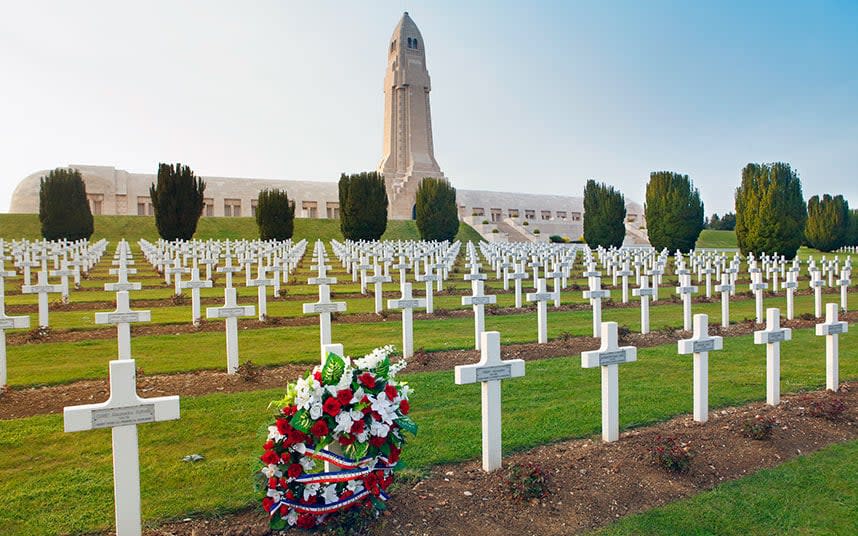
One day in the February half-term holiday of 1988, I was sitting at the kitchen table staring at a blank sheet of paper. With a GCSE history exam approaching that summer term, the prospect of writing a 2,000-word project on the history of the First World War felt slim. My mother suggested that I write to my Great-Uncle Cecil, who had fought in the Great War. So I did, asking him to share some recollections of his time at the front, where he had fought the Germans as a Second Lieutenant.
This episode came back to me recently as I prepared to take my own three children – aged 13, 12 and 10 – for a half-term break to Belgium. The plan was to visit some old friends in Ghent (cue cheers), but it seemed churlish not to stop by Ypres and the First World War battlefields that I had myself visited on a school trip some 30 years before (cue groans). Even today, the memory of Last Post echoing around the Menin Gate is one of the most fixed of my childhood. A century after the war, buglers still sound it at 8pm every day. For me, it was the moment that the 55,000 names of the unburied dead, parcelled out so neatly on to the walls of that memorial, took on a more pressing flesh-and-bone reality.
Still, the children’s groans were understandable; a defensive reflex against Dad going into “another one of his thousand-hour lectures”, as my 12-year-old daughter would say, with a barrel roll of her eyes. Dad “boring on again” in the mistaken assumption that his children might share his interest in century-old conflicts that, frankly, mean little to them. The son and heir is a closet history buff who recently read Ben McIntyre’s wartime history of the SAS, and is a voracious reader of Second World War fiction – but, still, revisiting my own childhood memories gave me pause for thought.
Yes, it is true that today’s children will encounter the centenary of the First World War, and, yes, remembrance poppies are available at the school gate, but the “war to end all wars” cannot live in their memories, third-hand, in quite the same way as it did in mine, second-hand. Time moves ever onwards. I could still (just) approach a living relative who was able to share first-hand memories. And at my boarding school in the mid-Eighties, we still spent Monday afternoons in the Combined Cadet Force, trudging around the North York Moors in scratchy Army-issue shirts carrying the same Lee-Enfield .303 rifles that had seen service in both wars.
All of which is to say that, to me, it wasn’t that long ago. A trip to the battlefields of northern France in 1988 didn’t require the same time-warp then as it did for my three children now. For me, those place names – Ypres, Verdun, the Somme, Vimy Ridge – were still redolent with horror in way that, say, a more distant battlefield like Waterloo, Gettysburg or the Boyne could never be, however “accessible” and well-crafted the museum displays or compelling the video re-enactments. I wondered if the fields of Flanders would now be similarly “dead” to my kids.
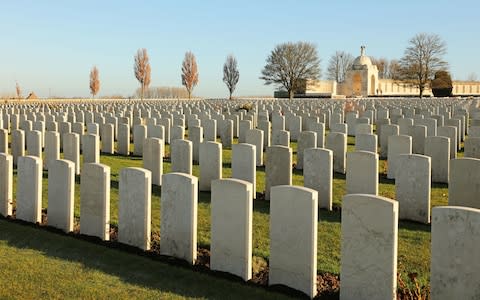
The answer is that while collective memory of that conflict is, of course, inexorably fading, the main museum in Ypres, called In Flanders Fields, does a remarkable job of stirring young minds. No need for Dad’s lectures here, just let the children wander, read and listen to the displays. Some of it was dense for the 10-year-old (particularly mine, more scientist than historian) but even she was drawn in. Months hence, she recalled the brilliant 3D video display of actors playing soldiers from France, Britain, Germany and Belgium, telling their different versions of the famous Christmas Eve when the guns fell silent for a day and the soldiers played football in no-man’s land. The multinational, multidimensional telling of that old story was typical of just how far the historiography of conflict has moved on, even since 1988.
For the nearly 14-year-old son, it was the grimmer, more technical end of the spectrum that fascinated, as well as the interactive dioramas of the battlefront around Ypres as it ebbed and flowed in the course of three battles. He was seized by the extraordinary flimsiness of the canvas-sided gas masks, with now-clouded eyepieces; and the bric-a-brac of war that even today is still churned to the surface of the local farmers’ fields – a rust-caked Webley revolver, a German helmet with its distinctive pointy top, rosaries and Princess Mary tobacco tins, rusting rifle magazines and tin cups.
I had wondered if a gruelling cinematic reconstruction of a day in the life of a doctor working around the clock in a field hospital saving limbs and lives might be dragging on a bit, but a sideways glance proved me wrong. His attention never wavered. Downstairs, the museum had a temporary exhibition on battlefield archaeology. A mini-documentary told how the bones of three British soldiers discovered in a field were excavated, identified and given a full burial. We watched as an earth-covered skeleton turned into a flesh-covered face staring out from under a peaked regimental cap. In an average year, 10 bodies are found in the environs of Ypres alone.
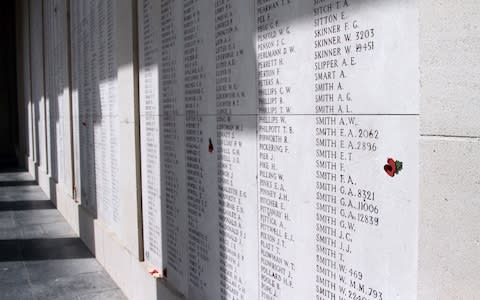
We were keen not to overload ourselves. Ypres was a waypoint en route to Ghent and a holiday of Belgian beer, frites and river swims. After a couple of hours contemplating the horrors of the 20th century, it was time to step back into the 21st and the town’s market square for coffee and crusty waffles dusted with icing sugar. So fortified, there was just time to stroll up to the Menin Gate. Five months later, the son volunteered the long lists of names, chipped into panels of Portland stone, among his memories of the trip. We searched for, and found, the name of that no-longer-missing soldier whose remains we had seen exhumed in the museum video, fleetingly rescued from anonymity.
For the rest of half term, at least until the drive home, there was no more talk of war. We had assumed that our Flemish friends’ kids would have been marched around the battlefield on a near-annual basis, but learned that this was something “only tourists really did” – and I recalled the part of the Flanders Fields Museum that explained why Belgium had been so ill-prepared to resist the German advances, and how differently every nation lives its parallel histories. With a late Eurotunnel booked for the final day of the holiday, we decided to travel back via a set of reconstructed trenches in a bend in the Yser river at Dixmude.
Curiously, after the museum at Ypres, the “Trenches of Death” (as they became known at the time) were underwhelming. I’d had them down as a potential highlight but, in the end, the lines of concrete sandbags were strangely antiseptic. The fact that the grass parapets of the trenches were dotted with poppies didn’t make a difference. Neither did the skylarks. The attached museum is tiny compared with the one at Ypres, which had so powerfully conjured the dirt and stink of the conflict. The concrete trenches felt unwittingly Disneyfied. This was reflected in the children’s response, which was to run down the narrow lines and play tag around the sharply angled revets.
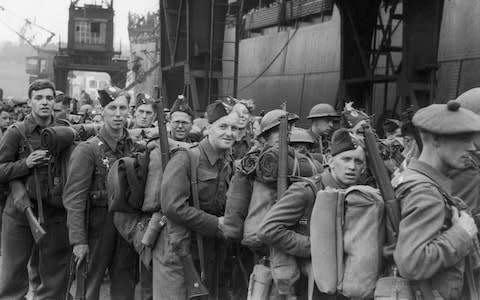
Our last stop, Dunkirk, was an impulse. We’d seen Christopher Nolan’s immersive account of the famous retreat last year, so when the name came up as a possible spot for dinner, there were cheers from the back seat. The Dunkirk museum is compact but full of tactile curiosities, including the buckled remains of a Stuka, a dive-bomber, hauled up from the seabed by a trawler a few years back. Most fascinating was the slightly sour French re-telling of an action that has become so mythologised in British minds.
Churchill may have spun a PR triumph from an abject military defeat, but what our schoolteachers forgot to tell us was how the Britons didn’t tell the French that they were leaving until the last minute; and how, when we did take French troops off the beaches we disarmed them on arrival in Britain (to their understandable fury) before shipping them back to France to fight an unwinnable war. With our heads still buzzing with the mayhem of Operation Dynamo, there was time for a paddle and a walk along Dunkirk’s beach. As you walk the wide sands, looking back at the line of cafés and hotels, you wonder how on earth some art deco structures ever survived the bombing.
It is strange how memories are passed down the generations. Great-Uncle Cecil did reply to my letter. Nearly blind and over 90, he composed five pages of agonisingly typed foolscap dated July 21 1988 – far too late, as it turned out, for that GCSE project. He told how he was a classics scholar but asked to be transferred from the Lower Sixth to the Army Class of his public school in early 1915. By May 1916, after basic training as an artilleryman at Woolwich, he was on a steamer to Boulogne en route to the Western Front. By July 1 1916 he was taking part in the Battle of the Somme at Delville Wood, where he recalled “dodging from shell-hole to shell-hole” across 1,000yd of open land, “being occasionally sniped” while mending phone wires cut by German shells. “Sometimes it worked,” he added, “and sometimes it didn’t.”
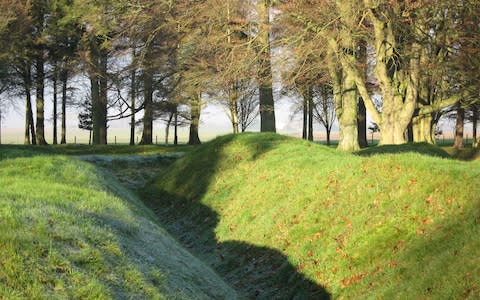
Cecil survived to the Battle of Arras in April 1917, but there he was shot through the neck while scouting for a forward observation post. After a bout of pneumonia and a period of convalescence in Manchester, he returned to the front to an artillery battery at Ypres and then on to Passchendaele where “almost every night the Germans bombarded us with gas shell”. There is no introspection in these pages, only a deeply mordant wit that could observe of a week’s leave in Paris that he had “wasted a lot of money in the Café de Paris and the Folies Bergères” but “returned safely from that”. He ends on a wistful note, expressing hope that, 70 years on, my schoolteachers could explain why these battles took place “and why they mostly failed to produce any real result”.
After our half-term trip, I dug out Cecil’s account so my son could read it. He did, totally absorbed, but still too young to appreciate that 100 years ago boys only a couple of years older than him were preparing for war. (My grandfather, born in 1900, recalled his headmaster reading out the roll call of the dead at morning prayers.)
It seems unthinkable but, after the uneasy stasis of the Cold War that framed my childhood, the political sands of Europe are shifting again. Nationalism rises once more, and my kids ask much more about Brexit – where it came from, what it might portend – than they do about what happened “in the War”. But, still, 100 years after the guns fell silent on the Western Front, some vestiges of Europe’s collective memory lives on, sloshing usefully around in the background, somewhere.
How to do it
Liberation Route
Liberation Route Europe is a remembrance trail that connects important milestones from the Second World War, forming a link between the main regions affected by the liberation of Europe in 1944-1945. Check its website (liberationroute.com) for events to commemorate the 75th anniversary of the end of the Second World War (2019-2020).
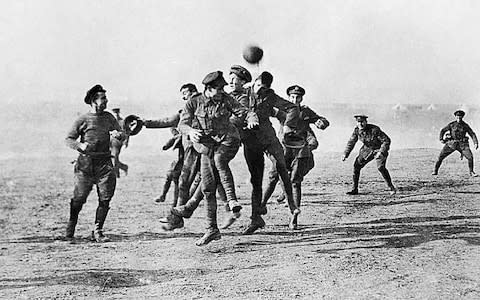
Europe Remembers
This EU-funded initiative aims to keep the World Wars in living memory. Its website, europeremembers.com, is a catalogue of trips, destinations and events across the Continent.
In Flanders Fields
An excellent museum and research institute in Ypres, inflandersfields.be/en.
Trenches of Death at Dixmude
See tourism.diksmuide.be.
Dunkirk Museum
See dunkirk-tourism.com.

